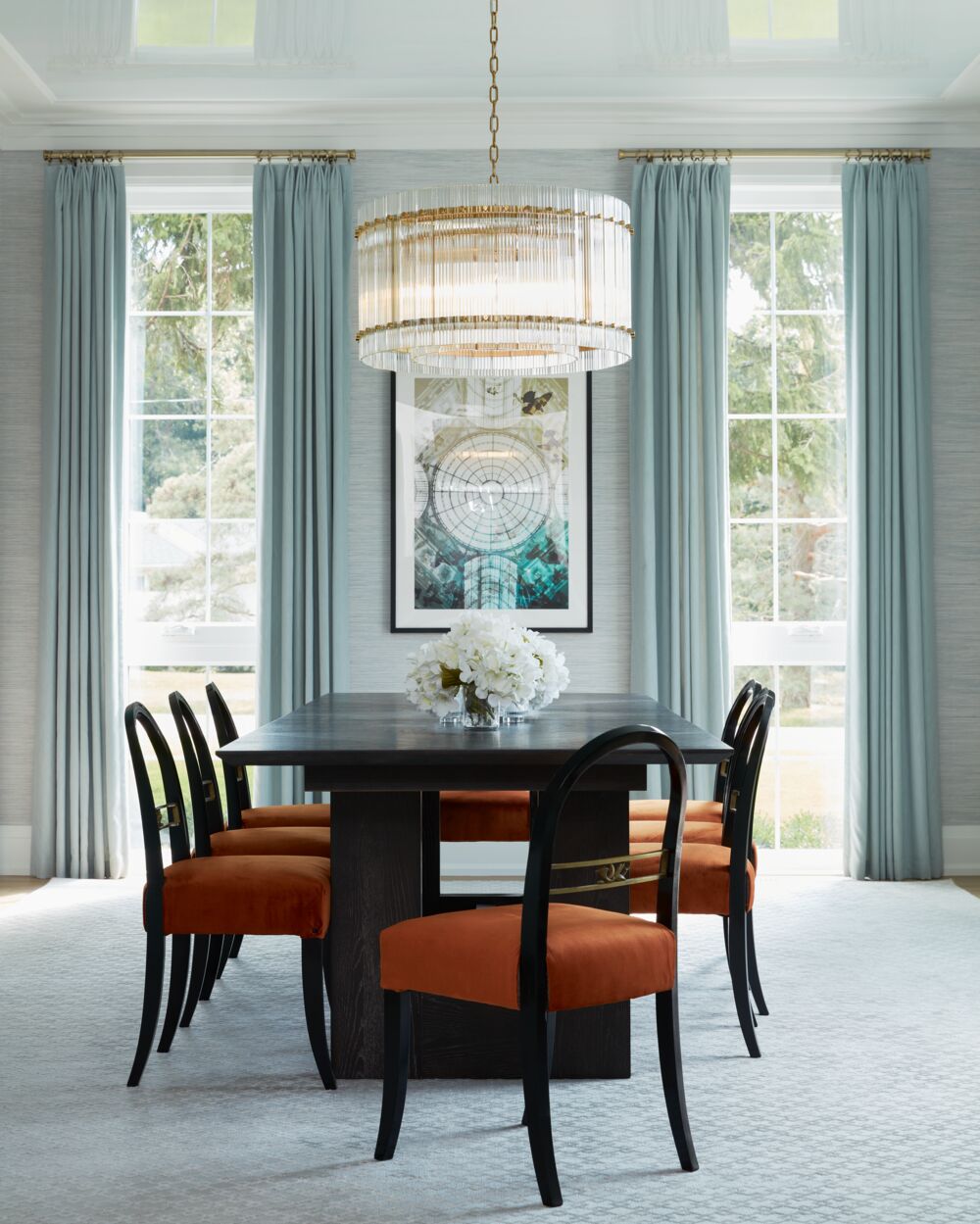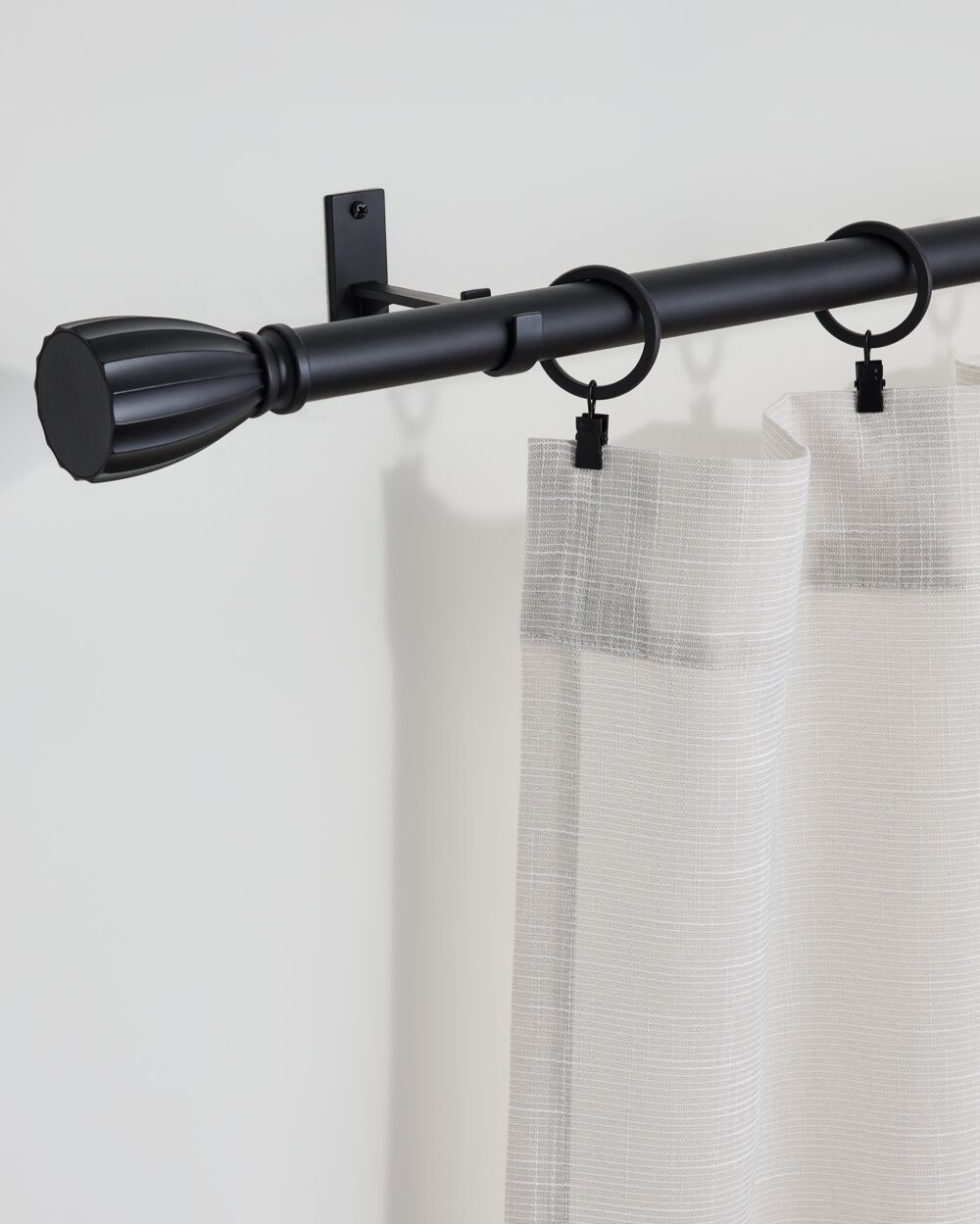
Drapery has the power to completely transform a space. Hung thoughtfully, it softens architecture, frames a view, and adds warmth or drama. Along with knowing what not to do, it helps to have a few simple guidelines to follow. These drapery dos and don’ts will make your window treatments feel polished and intentional in every room of the home.
Do: Match the Fabric Weight to the Room’s Function
Think carefully about how you use the room before choosing fabric weight. In a family room or kitchen, sheer panels with a linen-like texture allow daylight to filter in and keep the space bright, while still offering a layer of softness. In bedrooms or dining rooms, heavier fabrics such as tweed, velvet, or herringbone provide more privacy and help create a cozy, cocooning atmosphere. Consider how much light you want at different times of day and select fabrics that balance style with comfort.
Don’t: Overlook Length
Drapery that’s too short can make even the most beautiful room feel unfinished. For a tailored look, panels should just graze the floor—never hover several inches above it. To get this right, measure from the top of your installed rod to the floor before choosing your panel length. The placement of the rod makes a difference here as well. A good guideline is to position it about six inches above the window frame, which extends the perceived height of the room and makes the ceilings feel taller. If you have a lot of wall space above the window, adjust the rod height so the proportions remain balanced.
Do: Pay Attention to Colour and Texture
The fabric colour and finish you choose will influence the mood of the entire room. A soft neutral like white, silver, or natural blends seamlessly into the background, while bold hues such as deep green or blue velvet make the windows a focal point. Textured fabrics—whether a quiet stripe, a tweed weave, or a crosshatch pattern—add depth and dimension without overwhelming the decor. When in doubt, hold fabric swatches against your wall colour and existing furniture to see how the tones interact in natural light throughout the day.

Don’t: Forget the Hardware
Hardware isn’t just functional—it frames the drapery and should echo the style of your home. A sleek matte black rod with simple finials grounds a contemporary space, while brushed nickel adds a cool, polished touch. Brass or gunmetal finishes bring warmth and character, especially in transitional or vintage-inspired rooms. When choosing hardware, scale matters too: select rods that feel proportional to your window size and substantial enough to support heavier fabrics.

Do: Think Beyond the Living Room
Drapery has a role to play well beyond the main living area. In a dining room, it softens the formality of a table and chairs and makes the space feel more inviting. In a home office, panels can filter glare on screens while bringing warmth to a functional room. Even in hallways or entryways, a well-placed panel can soften hard lines and add a decorative element. Thinking beyond the obvious rooms ensures your entire home benefits from the style and comfort that drapery brings.
Keep these drapery dos and don’ts in mind and your windows will never feel like an afterthought. Instead, they’ll look polished, inviting, and perfectly at home in every room.
Photography by Britney Townsend (1), Kim Jeffery (2), A Plus Creative (3)